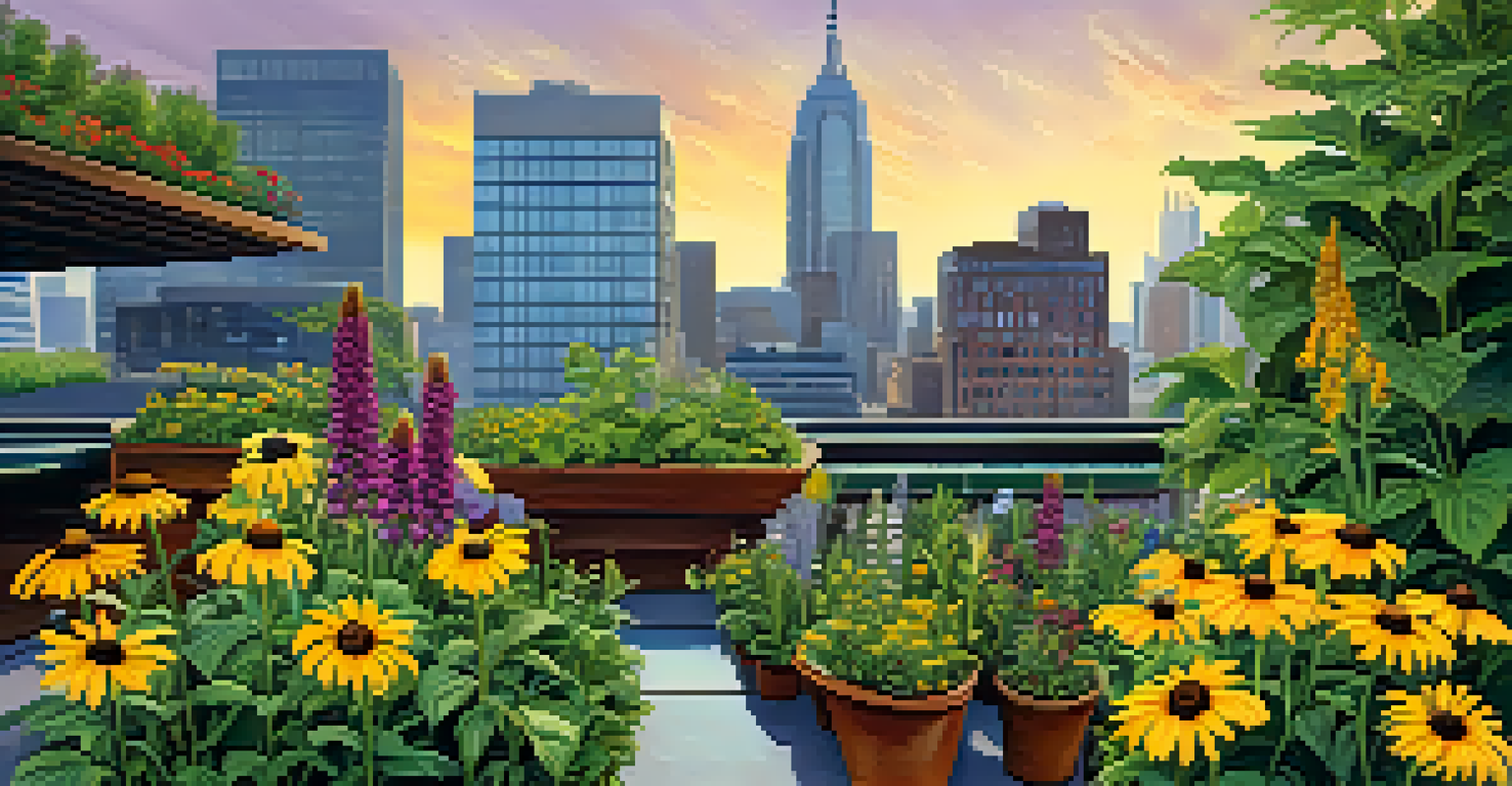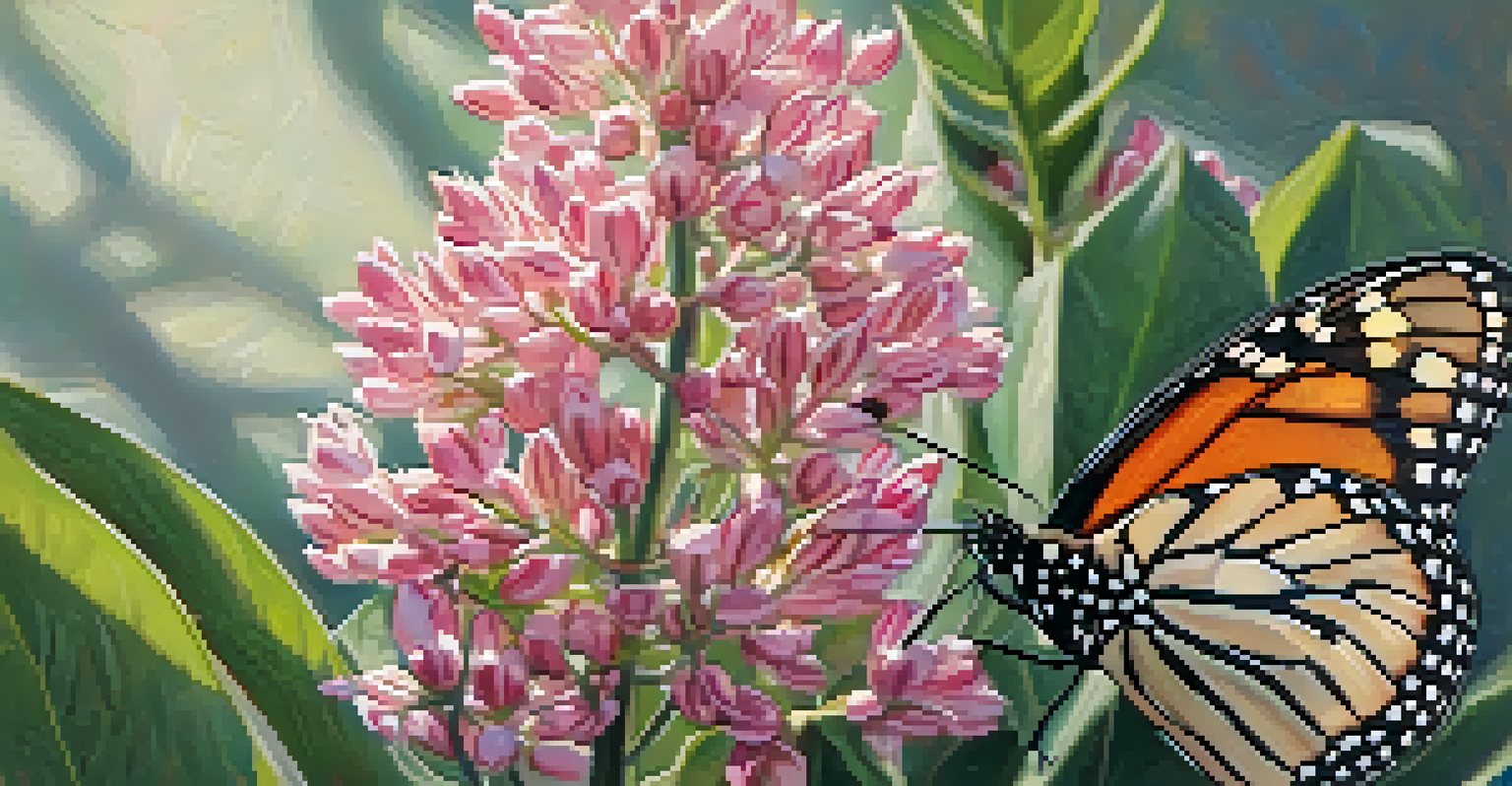Indigenous Plants and Their Role in Pollinator Support

Understanding Indigenous Plants and Their Importance
Indigenous plants, also known as native plants, are species that naturally occur in a specific region without human intervention. They are well-adapted to local climates and soil types, making them resilient and sustainable choices for gardens and landscapes. By preserving these plants, we maintain the ecological balance and support local wildlife, including pollinators.
The hum of bees is the voice of the garden.
These plants provide essential habitats and food sources for a variety of pollinators, such as bees, butterflies, and hummingbirds. Unlike non-native species, indigenous plants have co-evolved with local pollinators, ensuring that their blooms, nectar, and pollen are perfectly suited to attract and sustain them. This mutual relationship is critical for the health of our ecosystems.
Incorporating indigenous plants into our gardens not only benefits pollinators but also enhances biodiversity. A diverse plant community supports a range of species, which in turn helps to create a more resilient environment. When we plant native species, we are taking a crucial step toward conserving our natural heritage.
The Role of Pollinators in Ecosystems
Pollinators play a vital role in the reproduction of flowering plants by transferring pollen from one flower to another. This process not only leads to the production of fruits and seeds but also supports the growth of plants that provide food and habitat for other wildlife. Without pollinators, many of our crops and wild plants would struggle to thrive.

In fact, about one-third of the food we eat relies on pollination, including fruits, vegetables, and nuts. The contributions of pollinators extend beyond food production; they also support the health of entire ecosystems by fostering plant diversity. This diversity is crucial for maintaining resilient ecosystems that can adapt to change.
Indigenous Plants Enhance Biodiversity
Planting indigenous species supports local wildlife, particularly pollinators, and helps maintain ecological balance.
When we lose pollinators due to habitat loss or pesticide use, we jeopardize not only our food supply but also the balance of nature. Protecting pollinators is essential for preserving biodiversity and ensuring the sustainability of our environment.
Common Indigenous Plants That Support Pollinators
Some well-known indigenous plants that attract pollinators include coneflowers, milkweed, and black-eyed Susans. Coneflowers, with their vibrant purple petals, are especially loved by bees and butterflies. Milkweed is not only a host plant for monarch caterpillars; its nectar is a favorite among various pollinators.
Nature is not a place to visit. It is home.
Black-eyed Susans, with their cheerful yellow blooms, provide abundant nectar and pollen, making them a staple in many gardens. These plants thrive in local conditions and require less maintenance than exotic species, making them perfect for both novice and experienced gardeners.
By planting these indigenous species, we can create a welcoming environment for pollinators in our own backyards. This simple act contributes to the larger effort of conservation and helps sustain the delicate balance of local ecosystems.
Creating a Pollinator-Friendly Garden
Designing a pollinator-friendly garden involves selecting a variety of indigenous plants that bloom at different times of the year. This ensures that pollinators have a continuous food source throughout the seasons. By incorporating plants that flower in spring, summer, and fall, you create a vibrant oasis for these essential creatures.
Another key aspect is to provide shelter and nesting sites for pollinators. Consider leaving some areas of your garden wild or creating small brush piles to offer refuge. Additionally, providing a shallow water source can help thirsty pollinators, especially during hot summer months.
Pollinators Are Crucial for Food
About one-third of our food supply relies on pollination, highlighting the essential role of pollinators in ecosystems.
Using natural pest control methods and avoiding pesticides will further enhance your garden's appeal to pollinators. By creating a safe and inviting environment, you not only support pollinator populations but also enjoy the beauty and diversity they bring to your garden.
The Impact of Urbanization on Pollinators
Urbanization poses significant threats to pollinator populations, primarily through habitat loss and fragmentation. As cities expand, natural habitats are replaced with concrete and asphalt, reducing the availability of food and nesting sites. This can lead to declines in pollinator numbers and diversity, which directly affects our ecosystems.
Moreover, urban areas often rely heavily on non-native plants, which may not provide the necessary resources for local pollinators. This lack of suitable habitats can make it challenging for pollinators to thrive in urban settings. It's crucial to recognize that even small green spaces can make a difference in supporting these vital species.
By advocating for and implementing native plant landscaping in urban areas, we can help mitigate the negative effects of urbanization. Community gardens and green roofs planted with indigenous species can serve as sanctuaries for pollinators amid city life.
The Importance of Education and Awareness
Raising awareness about the importance of indigenous plants and pollinators is essential for fostering a culture of conservation. Educational programs, workshops, and community events can help people understand how their gardening choices impact local ecosystems. When individuals are informed, they are more likely to make environmentally responsible decisions.
Schools and community organizations can play a pivotal role in promoting native plant gardening and pollinator protection. By involving children in hands-on activities, such as planting native gardens or learning about pollinator life cycles, we nurture a sense of stewardship for the environment from a young age.
Urban Areas Threaten Pollinator Habitats
Urbanization leads to habitat loss for pollinators, making it vital to implement native plant landscaping in city environments.
The more people know about the connections between indigenous plants and pollinators, the greater the collective effort to protect them. This shared knowledge can lead to a ripple effect, inspiring communities to advocate for policies that promote biodiversity and ecosystem health.
Taking Action: How You Can Help Pollinators
There are several simple actions individuals can take to support pollinators in their communities. Starting with your own garden, consider replacing non-native plants with indigenous species that provide food and habitat for local pollinators. Even small changes can have a significant impact when many people participate.
Participating in local conservation efforts, such as native plant sales or cleanup events, can also make a difference. By volunteering your time and resources, you contribute to the preservation of natural habitats and the promotion of native plant education. Every action, no matter how small, counts.

Additionally, spreading the word about the importance of pollinators and indigenous plants can inspire others to get involved. Sharing information through social media or community forums can help build a network of like-minded individuals committed to protecting these essential species.